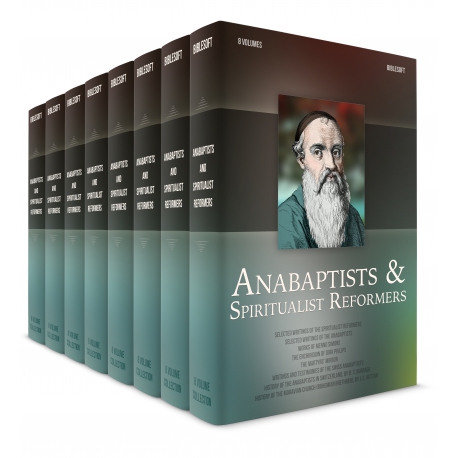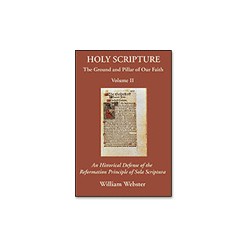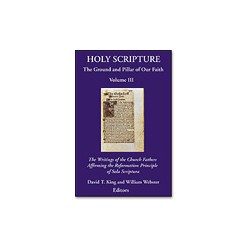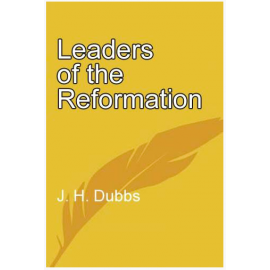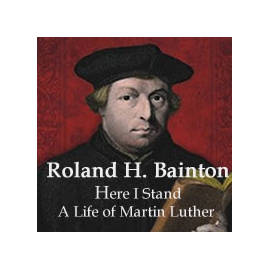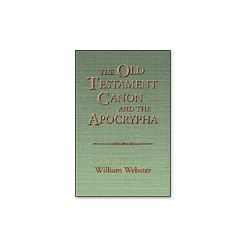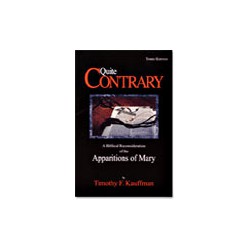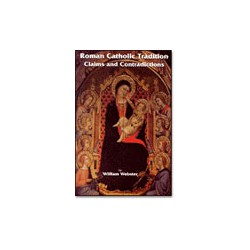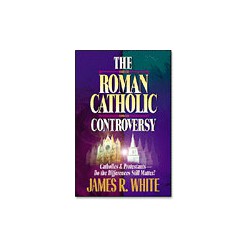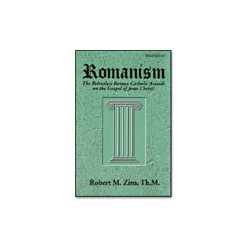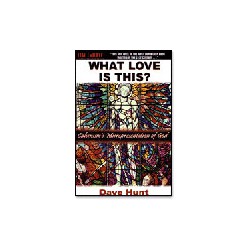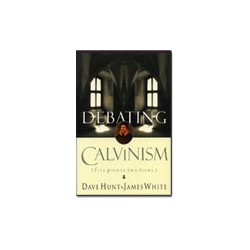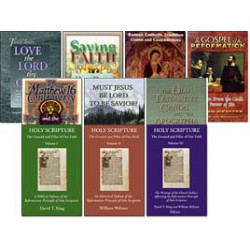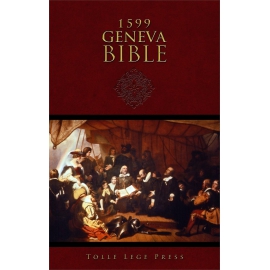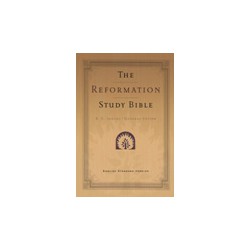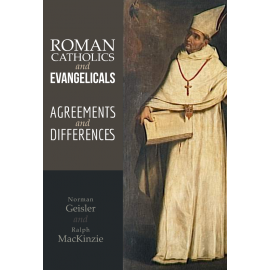No products
Product successfully added to your shopping cart
There are 0 items in your cart. There is 1 item in your cart.
Anabaptists and Spiritualist Reformers
A collection of writings and material from the so-called "Radical Reformation"—Anabaptists, Spiritualist Protestants, and other less-known and often-persecuted segments of the Reformation.
BIBLESOFT DOES NOT SELL EBOOKS
Requires Program PCSB Version 5 or OneTouch (find out more)
- Write a review
Product Information
This product is also available in the massive Reformation Classics Collection. Save when you buy the bundle.
By far the least known and poorly understood members of the Protestant movement, these men and women represent the so-called "Radical Reformation". Most of these dissidents and independent groups endured intense persecution -- facing prison, exile, or death -- sadly, at the hands of both Roman Catholics and Protestants alike. The Anabaptist movement began in Switzerland and spread throughout Germany, into the Netherlands and eastern Europe. The early Anabaptists included talented young scholars and theologians such as Felix Manz, Conrad Grebel, Michael Sattler, of which the two most prominent were Balthasar Hubmeier and Pilgram Marpeck. Two volumes of writings, testimonies, historical documents, and supplemental articles are offered, as well as the History of the Anabaptists in Switzerland, by H. S. Burrage.
The Anabaptists today survive among the Hutterites and Mennonites in North America. The Mennonite tradition is especially represented here by three volumes: Complete Works of Menno Simons and the Enchiridion of Dirk Philips; along with the Martyrs' Mirror by Tilemann van Braught, a compendious Church History, modelled after Fox's Acts and Monuments, which movingly details (with illustrations) the fierce persecution endured by the Anabaptists. These early German Baptists were precursors to the later (English) Baptist Tradition.
Biblesoft also offers a unique volume of writings by the so-called Spiritualist (or Spiritual) Reformers. Villified, more or less unjustly, as pernicious heretics, these lonely figures who pursued and espoused an "inner" spiritual path, over and against the external forms of worship and church government, had to endure, like the Anabaptists, much persecution. Johannes Denck, Sebastian Franck, and Caspar Schwenckfeld are the main Reformers of note. Because their views and writings are so poorly understood, some supplementary articles and a special introduction are included. In many ways, they are precursors to the 17th century Quaker movement, and the Pietist mystics.
What's Included
[Complete] Works of Menno Simons: [standard 2 vol. edition]
- Menno's Conversion and Renunciation of the Church of Rome
- Against the Blasphemy of John of Leyden (1535)
- The Spiritual Resurrection (c. 1536)
- Meditation on the Twenty-Fifth Psalm (1537)
- Fundamental Doctrine of the New Birth (1537, rev. 1552)
- Foundation of Christian Doctrine (1539, rev. 1558)
- An Explanation of Christian Baptism (1539)
- The Reason Menno Simons Does Not Cease Teaching and Writing (1539)
- The True Christian Faith (1541, rev. 1556)
- An Admonition How a Christian Should be Disposed, and Concerning Shunning (1541)
- Brief Confession on the Incarnation (1544)
- An Explanation of Excommunication (1550)
- A Confession of the Triune God (1550)
- Confession of the Poor and Distressed Christians (1552)
- Supplication of Poor Christians to All Magistrates (1552)
- A Brief Complaint or Apology to All Theologians and Preachers (1552)
- The Cross of the Saints (c. 1554)
- Reply to Gellius Faber (1554)
- Confession on the Incarnation (1554)
- Reply and Epistle to Martin Micron (1556)
- Exhortation to the Dispersed and Unknown Children of God (1556)
- How Parents Are to Govern (Education of Children, c. 1557)
- A Basic Instruction on Excommunication (c. 1558)
- Answer to Zylis and Lemmekes (1560)
- 9 Letters of Menno Simons
Selected Writings and Testimonies of the Early Anabaptists:
- Introductory/biographical Articles on many of the featured persons
- Conrad Grebel, Letters to Thomas Müntzer
- The Twelve Articles of the Peasants
- Excerpt from the Hutterite Chronicle on George Blaurock
- Felix Mantz, Letter from Prison
- Balthasar Hubmaier, On Free Will
+ Excerpts from other writings
- The Schleitheim Confession of Faith
- Michael Sattler, On Two Kinds of Obedience
- Trial and Martyrdom of Michael Sattler
- Hans Hut (excerpts from several writings)
- Leonard Schiemer, Three Kinds of Baptism in the New Testament (+ one other excerpt)
- Hans Schlaffer (two excerpts)
- Pilgram Marpeck (excerpts from Five Fruits of Repentence, and other writings)
- Hans Schnell, How to Distinguish Between Temporal and Spiritual Regimes
- Jacob Hutter (two excerpts)
- Peter Riedeman, Account of Our Religion, Doctrine and Faith (major excerpts)
- Ulrich Stadler, Cherished Instructions on Sin, Excommunication, and the Community of Goods (+one other excerpt)
- Dirk Philips, "The Church of God" (+ one other excerpt), from the Enchiridion
- Obbe Philips, Confession ("Recollection of the Years 1533-1536)
- Melchior Hoffmann, The Ordinance of God
+ Excerpts from other writings
- Bernard Rothmann (several excerpts from his Confession of Faith and Restitution)
- APPENDIX: Johann Brenz, Opinion "Whether the Magistrate Has the Right to Put to Death Anabaptists and Other Heretics" (1528)
Selected Works by Spiritualist Reformers and Quakers:
- Introductory/biographical articles for many of the featured persons, taken primarily from Rufus Jones, Spiritual Reformers
- Hans Denck, Whether God is the Cause of Evil
- Hans Denck, Concerning True Love
+ Excerpts from other writings
- Sebastian Franck, Letter to John Campanus (+ adapted excerpts from the Chronica)
- David Joris, Plea for Servetus
+ Excerpts from other writings
CASPAR SCHWENCKFELD:
- A Christian Exhortation for the Furtherance of the Word of God (1524)
- Twelve Questions or Arguments on the Lord's Supper (1525)
- The Course of the Word of God (1527)
- Answer to Luther's Malediction (c. 1543)
- Statement Concerning the Non-Observance of the Lord's Supper (1561)
- A Discourse on Freedom of Religion, Christian Doctrine, Judgment and Faith (c. 1561)
+ Numerous extracts from other writings
- Valentine Weigel, Sermon on the Good Seed and the Weeds (Matt. 13:24-30)
- Jacob Böhme, THE WAY TO CHRIST
Of True Repentance; Of Regeneration, or the New Birth; Of True Resignation, or Dying to Self; The Supersensual Life
- William Penn, Brief Account of the Rise and Progress of the People Called Quakers
- Autobiography of George Fox
- Appendix: Thomas Müntzer, Sermon before the Princes
- Additional Appendixes on the Thought and Legacy of Jacob Böhme, etc.
Excerpt
INTRODUCTION
To This Electronic Edition
This Volume is devoted to writings by the Protestant Anabaptists of the sixteenth century. "Anabaptism" literally means "rebaptism" or "second baptism", Anabaptists being so-called because they would baptize people a second time — an adult "believer's baptism" in addition to the normal infant baptism of the period. Some of their opponents also referred to them as "Catabaptists" - i.e., those against (infant) baptism. However, they themselves preferred to be called "Baptists"; since, in their view, infant baptism was not valid (and had no right to be called 'baptism'), there was no 'second' baptism: only adult baptism was valid. Today it is popular to group these early Baptists as part of the "Radical Reformation" or "Left Wing of the Reformation", but neither designation is entirely accurate. "Left Wing" today implies liberal tendencies which were really no part of the Anabaptists; and though many of the individuals and groups were in some sense "radical", they could just as easily be labeled "ultra-conservative". Perhaps it was the sense of following closely in the footsteps of Christ and the early apostles, coupled with the sustained experience of persecution, which gave to these believers a certain "radicalism".
The Selections below are organized into two main groups: 1) The Swiss and South German Anabaptists, and 2) the Mennonites and Hutterites. It is worth pointing out some of the main features of Anabaptist belief and practice, which distinguished them from the mainstream 'magisterial' Protestants (Lutheran, Reformed, and Unionist):
1. Adult Baptism. This is, of course, the main feature, and the one for which they are named. Infant Baptism was viewed as a superstitious relic of the Roman Catholic Church, which other Protestants were erroneously maintaining, but which had no express command or sanction in Scripture. Moreover, adult Baptism was considered in the context of faithful imitation of Christ, as one makes a conscious decision to follow him (most Anabaptists had a strong belief in free will, see below). Just as Christ went into the desert to be tempted after his baptism, so true followers must enter into the desert of suffering and temptation, dying to self (mortification was a strong theme) and experiencing persecution. This was all-too real an experience: rebaptism was a capital offence, and persecution was widespread (see below). The "Threefold" understanding of Baptism, popularized by Hans Hut and his followers, became normative: baptism by water, spirit, and blood (persecution).
2. Role of the New Testament. Perhaps the most "radical" feature of the early Anabaptists was their insistence on the primacy of the New Testament witness, and a close, literal observance of it. Anything which was not expressly commanded in the New Testament should be abandoned, and the example of Christ and the apostles followed carefully. Even the Old Testament law, which many Protestants tried to maintain (within a Christian context), was understood no longer to apply. It was especially Christ's teaching in the Sermon on the Mount, the example of the apostolic church in faith and practice, and the exhortation to endure persecution which stood out most in their minds.
3. Pacifism and Separation. A strict interpretation of the Sermon on the Mount led Anabaptists to some of their most distinctive beliefs: denial of oath-taking, non-resistance, etc. Nearly all of the Anabaptists were strict pacifists, and their refusal to engage in (or support) acts of war, coupled with other New Testament teaching on separation, led most one step further: refusing to participate in any form of civil government. Though there was some debate on the question, theologians such as Hubmaier and Marpeck admitted that it would be difficult, at best, for a faithful believer to take a role in civil government.
4. Opposition to Persecution. Their pacifism, along with their own experience of persecution (from Roman Catholics and other Protestants alike), led them vehemently to oppose any form of religious persecution by the State. Civil government had neither the duty nor the right to enforce or establish religious belief. This hardly made the Anabaptists religious pluralists in the modern sense (all of the Protestant sects were more or less intolerant in this regard); rather, they believed that punishment or discipline in religious matters is the responsibility of the believing community alone. Only a very few ever resorted to, or condoned, violent action (see on the Münster extremists).
5. Excommunication, Ban, Shunning. This was as far as the New Testament allowed Christians to go, and most Anabaptist groups sought to follow the direction faithfully. The Mennonite leaders Dirk Philips and Menno Simons wrote extensively on the subject, and there was intense debate and controversy over guidelines for dealing with banned/shunned family members, etc.
6. Communalism and Community of Goods. Most Anabaptist groups tendedtoward some form of communalism, though only the Hutterites (Bruderhof) developed a full-fledged and lasting communalistic organization. The example of goods held in common as an ideal is taken from Jesus and his followers, and, more importantly, from the Jerusalem church in the early chapters of Acts. In addition, the combination of evangelical separation and experience of persecution, served naturally to reinforced ties of communal concern and support.
7. Free Will. Theologically, this is perhaps the most significant feature of Anabaptist thought, and all who wrote on the subject drew a stark contrast with the doctrine of predestination taught by other Protestants. Most Anabaptists were universalists — not in the modern sense that 'all will ultimately be saved', but in the sense that, due to the work of Christ, all persons are now free to choose to follow him unto salvation. Balthasar Hubmaier, in his treatise on Free Will, provides one of the clearest statements on the matter.
In addition to these key tenets, there are several other features which appear in some of their writings:
1) A peculiar, rather extreme view of Church History, whereby the established churches became corrupted almost from the time of the death of the apostles. This an exaggerated adaptation of the general Protestant view of the corruption of the Roman church after the time of Constantine, etc. In this regard the historical works of Sebastian Franck and other Spiritualist reformers had a considerable influence on the Anabaptists.
2) A strong eschatological worldview: the widespread experience of persecution naturally led many Anabaptists to the belief that the Last Judgment and return of Christ were imminent. The book of Revelation proved popular in Anabaptist circles, as did, for a time, the quasi-prophetic teachings of men like Melchior Hoffmann (see below). Some Anabaptist groups were chiliastic, but many were not.
3) A few Anabaptists adopted a peculiar heterodox Christology, which held that Christ's human nature (i.e., his flesh) was in some sense heavenly, divinized even before the Ascension. This belief was to be found mainly among the Melchiorites and Mennonites, influenced by both Melchior Hoffmann and Caspar Schwenckfeld; it can be found in Menno Simons' writings, though it was soon abandoned by the Mennonites. As a kind of revival of Pseudo-Cyrillian/Apollinarian ideas, it grew within the Eucharistic controversies of the early 16th century.
Among the Swiss and South German Anabaptists, the selections below document the earliest years of the Anabaptist movement, centered around Zurich: the controversies with the Reformed (Zwinglians), the first martyrdoms (Felix Mantz, etc.), and the quick spread throughout Switzerland and north-northeastward through Germany and Austria. Balthasar Hubmaier is the main theologian of early Anabaptism, suffering at the hands of Protestants (imprisoned and tortured in Zurich) and Roman Catholics (arrested and executed)* alike. Michael Sattler is an important figure, due mainly to the account of his martyrdom, and his role in authoring the Schleitheim confession. Though not technically an Anabaptist document, the Twelve Articles of the Peasants has also been included; the Peasant Revolt of 1525 coincided with the Anabaptist movement in Switzerland and South Germany, and there are certain affinities of thought.
After Hubmaier, Pilgram Marpeck is most prominent Anabaptist theologian of the period. Due to his longer life-span and the relative freedom he had to write and publish, a significant literary output survives, of which only a few pieces can be included here. He addressed many of the key doctrinal issues and controversies at the time, including a written exchange with Caspar Schwenckfeld.
For the Hutterites, selections have been made from both Jacob Hutter and from Peter Riedmann's Account; the latter is a comprehensive statement of faith. Ulrich Stadler's Cherished Instructions states the doctrinal and ethical basis of Hutterite communalism, which they viewed as a necessary component of Christian faith and life.
The Mennonites have here been limited to one tract from Dirk Philips' Enchiridion. The complete Enchiridion, as well as the complete Works of Menno Simons are being made available in separate volumes of this electronic collection.
Any treatment of early Anabaptism must also touch upon the tragedy of Münster. The extremists who took over the city by force (and who sought to do the same in Amsterdam and elsewhere) were truly 'radical' Anabaptists in the worst sense. Fueled by end-time expectations, as well as a range of pseudo-prophetic pronouncements and visions, elements of these northern Anabaptists turned violent, in the belief that they were ushering in the kingdom of God on earth. Melchior Hoffmann, who was the main inspirational figure, even after his arrest in Strasburg, is represented in several selections, his Ordinance of God providing a good introduction to the eschatological interpretation shared by many Anabaptists. The positive thought of these extremists can be glimpsed in the writings of Bernard Rothmann, the Lutheran-turned-Anabaptist pastor of Münster. Obbe Philips (brother of Mennonite leader Dirk Philips) provides a moving account of the history of the Münster tragedy; disillusioned by the entire experience Obbe abandoned the Anabaptists*, taking a more independent spiritualist path.
Finally, in an appendix, a tract by Johann Brenz, the reformer of Württemberg, from 1528 (Opinion "Whether the Civil Magistrate Has the Right to Put Anabaptists to Death") has been included. This tract, used by Castellion in Concerning Heretics, shows the moral struggle mainstream Protestant leaders faced on the question of how best to punish Anabaptists and other supposed heretics. Under the laws of the Christian Roman Empire (i.e., in the Theodosian and Justinian Codes), Rebaptism was a capital crime, though in the sixteenth-century the historical reasons for this were poorly understood.* Humanists such as Erasmus equivocated on the issue, as did the milder Protestant leaders such as Oecolampadius, Capito and Hedio (in Basle and Strasburg). However, by 1529, nearly all Protestants in positions of power and influence had joined Roman Catholic authorities in condemning Anabaptism as a heresy deserving of the death penalty. The edicts were enforced to varying degrees, location by location (Pilgram Marpeck, for example, was left relatively unmolested*); in any event, banishment was always a more common punishment than execution. The earliest executions (Mantz, Sattler, Hubmaier, etc.) are now the most famous; but, as martyrologies such as the 17th-century Martyrs' Mirror graphically testify, persecution unto death remained a grim reality for many generations.
(from Selected Writings and Testimonies of the Early Anabaptists, PC Study Bible formatted electronic database Copyright © 2012 by Biblesoft, Inc. All rights reserved.)
Screenshots
Click each thumbnail for a larger view and a description of the screenshot.
Product Details

